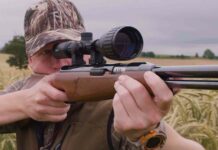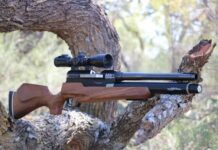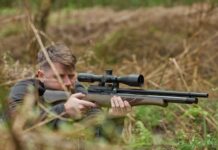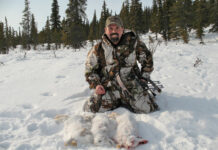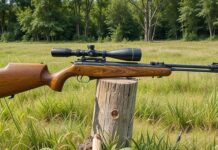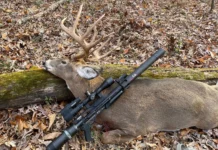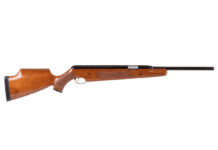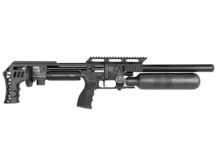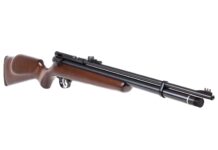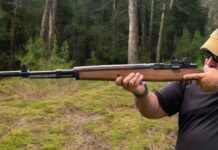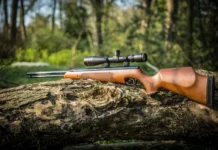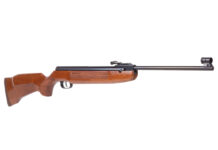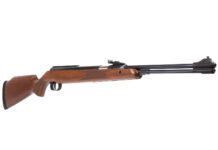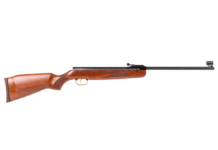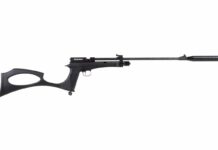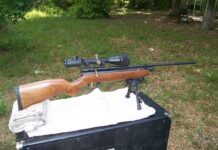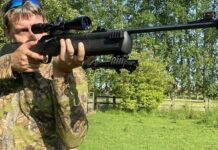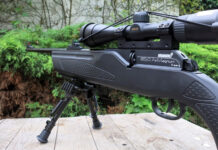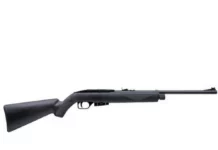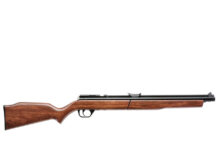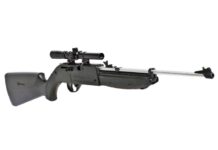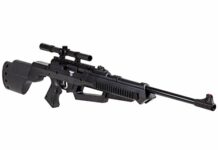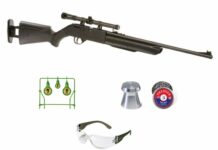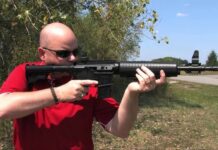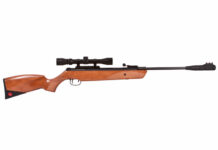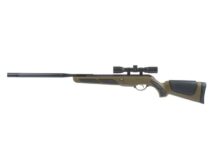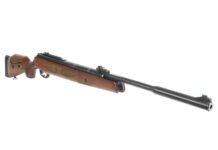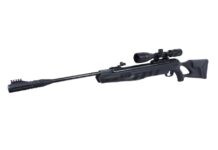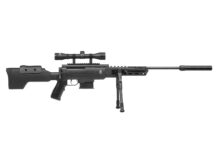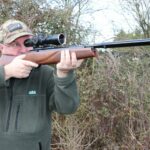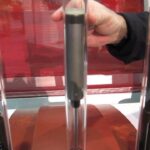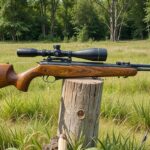Table of Contents [hide]
- 1 Trying to decide between the 223 Remington and 243 Winchester cartridges? Here’s what you need to know about them.
- 2 223 Remington vs 243 Winchester Podcast
- 3 History Of The 223 Remington and 243 Winchester
- 4 243 Winchester and 223 Remington Cartridge Sizes
- 5 243 vs 223 Ballistics
- 6 223 vs 243 Barrel Life
- 7 243 vs 223
- 8 223 vs 243 Ammo
- 9 223 vs 243 Rifles
- 10 243 vs 223: Which Is Right For You?
- 11 NEXT: 308 vs 30-06 SPRINGFIELD vs 300 WIN MAG: WHICH SHOULD YOU HUNT WITH?
- 12 Enjoy this article comparing the 223 Remington and 243 Winchester cartridges? Please share it with your friends on Facebook and Twitter.
Trying to decide between the 223 Remington and 243 Winchester cartridges? Here’s what you need to know about them.
I think most hunters would agree that the 223 Remington and 243 Winchester both fantastic cartridges for hunting a variety of game. However, while there is a lot of overlap in their capabilities, there are some significant differences between the 243 vs 223 cartridges you should be aware of.
Unfortunately, it’s often hard to separate fact from fiction or to determine the true capabilities of a cartridge these days. As you’ll learn here shortly, both cartridges are best suited for different tasks, but can be adapted to other uses to a certain degree by switching bullet weights and types.
In this article, I’m going to investigate the 243 vs 223 debate in detail and provide some insight into which cartridge is better suited for various situations so you can make an informed decision on which one will work best for you.
Before we get started, I have a couple of administrative notes for you.
First, though the .223 Remington and the 5.56x45mm NATO are technically different cartridges, the practical difference in performance between the .223 vs 5.56 is very small and doesn’t make any difference for the purposes of this article. Use extreme caution when attempting to interchange the .223 Remington and 5.56x45mm NATO cartridges though.
For a more detailed discussion on the differences between the .223 Remington and 5.56x45mm NATO cartridges, read this article: 5.56x45mm NATO vs .223 Remington
Next, some of the links below are affiliate links. This means I will earn a small commission (at no extra cost to you) if you make a purchase. This helps support the blog and allows me to continue to create free content that’s useful to hunters like yourself. Thanks for your support.
Finally, I recorded an entire podcast episode on this exact subject. If you’d rather listen than read, click the appropriate link below to listen to this episode on your preferred podcasting service.
223 Remington vs 243 Winchester Podcast
Apple | Google | iHeart | Pandora | Spotify
History Of The 223 Remington and 243 Winchester
The story of the .243 Winchester and the .223 Remington both begin with the .308 Winchester.
Winchester unveiled the cartridge we now know as the .308 Winchester back in 1952 and the new cartridge quickly developed a reputation for accuracy, power, and efficiency with hunters and shooters. As is the case with many good cartridges, wildcatters and gun designers started modifying the .308 Winchester to develop new and more specialized wildcat cartridges almost immediately after it hit the market.
Among others, the .260 Remington, 7mm-08 Remington, .338 Federal, and .358 Winchester are all descended from the .308 Winchester as designers necked the case up or down as necessary to shoot smaller or larger 6.5mm, 7mm, .33 caliber, or .35 caliber bullets respectively.
Experiments with necking down the .308 to shoot smaller, 6mm/.243″ bullets yielded one of the first cartridges descended from the .308 Winchester in 1955: the .243 Winchester.
By necking down the .308 case to shoot smaller caliber bullets, the designers of the .243 Winchester built a cartridge with a higher velocity, flatter trajectory, and less recoil than the .308 Winchester.
The new .243 Winchester really caught on with a segment of the hunting population that wanted a flat shooting and light recoiling rifle cartridge that was still powerful enough to cleanly take big game like deer and pronghorn.
Capable of shooting heavy as well as light bullets with very good accuracy, the .243 Winchester was also a great varmint hunting cartridge and successfully bridged the gap between traditional varmint cartridges of the day like the .22 Hornet and .220 Swift on one hand and popular big game hunting cartridges like the .270 Winchester and .30-06 Springfield on the other.
While the .243 Winchester was indeed a very well designed and very effective cartridge, there are plenty of good cartridges that don’t experience commercial success for one reason or another. Fortunately for the .243 Winchester, Field & Stream editor Warren Page extolled the virtues of the .243 in his columns.
Similar to what Jack O’Connor did for the .270 Winchester at Outdoor Life, Page’s columns almost certainly helped drive demand for the .243 Winchester.
However, the .243 also got something of an unintended assist from Remington when they released the competing .244 Remington the same year Winchester released the .243. Designed by necking down a .257 Roberts case (itself a necked down 7x57mm Mauser) to .243 caliber, the .244 Remington had a small ballistic advantage over the .243 Winchester.
However, Big Green made the unfortunate initial decision to use a slower 1:12″ rifling twist in their .244 Remington rifles. These rifles performed very well with lighter bullets for use on smaller predators and varmints like coyotes, but they were unable to stabilize the longer 100gr bullets that were best suited for use on bigger game like deer and antelope.
Since Winchester produced their .243 rifles with a faster twist rate of 1:10″, they could accurately shoot heavier bullets in addition to lighter bullets and were thus much more versatile than the .244 Remington initially.
Remington renamed the .244 the 6mm Remington a few years later and started producing rifles with a 1:9 twist rate, but the damage had already been done and the .243 Winchester was already well established and had claimed the majority of the 6mm centerfire rifle market share.
The .244/6mm Remington was not a commercial success for the company, but Remington did much better with another cartridge they developed in the 1950s.
The US Military began searching for a replacement for the relatively new M-14 rifle and 7.62x51mm cartridge during the 1950s. They eventually settled on the M-16 rifle and the high velocity 5.56x45mm cartridge, which was derived from the .222 Remington.
Remington saw the potential for a tremendous commercial opportunity and developed a civilian version of the new cartridge that was extremely similar, but not identical to the 5.56 NATO cartridge. Formally standardized with SAAMI as the .223 Remington in the early 1960s, the new cartridge was capable of firing a 55 grain bullet at muzzle velocities approaching 3,300 feet per second (1,330 foot pounds of energy).
The 5.56x45mm NATO cartridge had very similar ballistics and the original 5.56x45mm M193 ball load fired a .224″ 55 grain full metal jacket bullet at 3,250 feet per second (1,290 foot pounds of energy).
Unfortunately, the 5.56x45mm NATO cartridge and M-16 rifle got off to a very rough start in service with the U.S. Army and Marine Corps in Vietnam. Modifications to the rifle and ammunition solved most of the reliability problems that plagued the system during the war. Large numbers of people in the U.S. military still had serious concerns regarding the stopping power of the diminutive cartridge though.
This was especially true for the new M855 load adopted with the M-16A2 rifle. Incorporating a new bullet design with a steel penetrator, the M855 load fired a 62 grain full metal jacket bullet at 3,025 feet per second (1,260 ft-lbs of energy).
The M855 penetrates much better than the M193, but complaints about the terminal performance of the 5.56x45mm cartridge from Soldiers grew even louder after the new ball load saw use in combat in the 1990s and early 2000s.
Civilian hunters who adopted the AR-15 and .223 Remington cartridge during the last couple decades of the 20th Century shared many of those concerns. The rifle and cartridge worked extremely well for predator/varmint hunting and target shooting, but the .223 Remington also developed a reputation for unsatisfactory performance on bigger game like deer.
With all that said, the 223 Remington remains one of the most popular cartridges in North America today. In terms of ammo sales, it’s probably the most popular centerfire rifle cartridge in the United States.
The cartridge is extremely popular among those who enjoy shooting the AR-platform as well as predator and varmint hunters. It’s also in very common usage with recreational shooters ranging from casual plinking to more serious competitive shooting.
Additionally, while it’s still on the light side for that sort of work, advances in bullet technology have made the 223 Remington much more effective on deer sized game today than was the case even 10-20 years ago.
243 Winchester and 223 Remington Cartridge Sizes
You can see differences between the 223 Remington and the 243 Winchester in the photos below.
First, the 223 Remington is physically quite a bit smaller than the 243 Winchester.
The 243 Winchester has a longer overall length and uses a longer case length than the 223 Remington. The Winchester cartridge has an overall length of 2.71″ and uses a case 2.045″ long. The 223 Remington has an overall length of 2.26″ and uses a 1.76″ long case.
That said, the 223 Remington is designed for use in an AR-15, which can only accommodate cartridges up to 2.26″ long. So, the 223 is the maximum size cartridge that will fit in an AR-15. The longer 243 Winchester will not fit in an AR-15 and requires the use of a larger AR-10.
Both cartridges are commonly found in short-action bolt action rifles though.
The 243 has a larger rim diameter than the .223 Remington as well (.473″ vs .378″).
For all those reasons, the 243 Winchester has quite a bit more case capacity than the 223 Remington.

Bullet size is another one of the other important differences between the 243 vs 223 Remington. The 243 Winchester uses .243″ diameter bullets while the 223 Remington uses smaller .224″ bullets.
The 223 Remington is capable of using bullets in the 35-77 grain range. Of these, 55 grain and 62 grain bullet weights are by far the most common.
On the other hand, the vast majority of 243 Winchester factory loads shoot bullets in the 55-115 grain range, with 55, 87, 90, and 100 grain bullets being the most common.

The 243 Winchester is also loaded to a higher pressure than the 223 Remington (60,000psi vs 55,000psi).
Note: while the powder capacity figures listed below do give a good indication of the differences between the two cartridges, exact case capacities vary slightly according to the brand of brass used.


243 vs 223 Ballistics
As you can probably imagine, the differences in the external dimensions of these cartridges also translate into some important differences in their ballistic performance. This is illustrated in the table below comparing Hornady Superformance Varmint, Nosler Varmageddon, and Winchester Deer Season XP factory ammunition.
Specifically, the 223 Remington loads use 35gr NTX (.177 BC), 55gr Varmageddon (.255 BC), and 64gr Extreme Point (.282 BC) bullets.
The 243 Winchester loads use 58gr V-Max (.250 BC), 70gr Varmageddon (.305 BC), and 95gr Extreme Point (.363 BC) bullets.
The Hornady loads use light for caliber varmint bullets fired at a very high velocity for each cartridge, the Nosler loads use mid-weight varmint bullets for each cartridge, and the Winchester loads use heavy for caliber bullets designed for deer hunting. This allows us to conduct as close to an “apples to apples” comparison as is possible for both cartridges for varmint and deer hunting applications.
All six loads used a 200 yard zero.


As you can see, that lightweight 58gr 243 Winchester has by far the flattest trajectory of the group and has about 10″ less bullet drop at 500 yards than the flattest shooting 223 Remington load. That 58gr load has a muzzle velocity over 800fps faster than the 55gr 223 Remington load and uses a heavier and more aerodynamic bullet than the slightly faster 35gr 223 Remington load.
By the same token, the 243 Winchester is also capable of firing 95gr bullet as fast or faster than the 223 can fire a 55gr or a 64gr bullet. That particular Deer Season XP load has 56-72% more muzzle energy than the various 223 Remington loads. Since it uses a more aerodynamic bullet, that edge in kinetic energy grows as range increases.
That 243 load drops below 1,000 ft-lbs of energy just shy of 400 yards, but still has more than double the retained kinetic energy of the most powerful 223 load.
The chart below compares how much a 10 mile per hour crosswind impacts those same 223 Remington and 243 Winchester loads out to 500 yards.


This is another area where the 243 Winchester shines and the cartridge has a significant advantage over the 223 Remington at all ranges in terms of wind drift. This is because the cartridge uses heavier and generally more aerodynamic bullets than the 223 Remington.
While the 223 Remington is considered a high velocity cartridge, it’s also often loaded with lighter bullets with a fairly low BC that don’t retain energy or resist wind deflection very well.
Now let’s talk about recoil.
The table below compares the recoil produced by handloads that approximate the performance of the Winchester factory loads above firing the 64gr and 95gr bullets for the 223 Remington and 243 Winchester respectively when fired from identical 7 pound rifles.


Felt recoil will vary from shooter to shooter and rifle to rifle, but free recoil energy is still a useful way to compare cartridges.
As you can see, the .223 Remington has significantly less recoil than the 243 Winchester.
In fact, the 243 Winchester has almost 3x more recoil! That’s really saying something too because the 243 Winchester is a very mild recoiling cartridge itself.
All things considered, most hunters should be able to handle recoil from the 243 Winchester without too much trouble. The .223 Remington just has an extremely mild (almost non-existent) recoil.
So, the .223 Remington has a big advantage in this respect, especially for smaller or recoil shy hunters.
Don’t underestimate the impact that recoil has on the ability of a person to shoot accurately either.
Some people do handle recoil better than others, but all other things being equal, they will absolutely shoot more accurately with a milder recoiling cartridge.
What about 243 vs 223 accuracy?
The .223 Remington in particular has seen extensive use in the hands of competition shooters and has an outstanding reputation in that area. However, the 243 Winchester also excels in that area as well and, if we’re being honest, both cartridges are absolutely capable of tack driving accuracy (sub-MOA, sometimes much better) in the right hands.
Though the exceptionally mild recoil of the .223 Rem gives that cartridge an advantage at short range (200 yards or less), the 243 Winchester has a longer effective range and a big advantage at ranges past 200 yards because those heavier and more aerodynamic bullets retain more energy and are less susceptible to wind drift.
Additionally, there are a couple of other factors that are also worth discussing.
First, the 243 Winchester uses larger diameter bullets than the 223 Remington.
Specifically, the larger diameter .243″ bullets used by the cartridge have about 18% more frontal surface area (also known as cross sectional area) than the .224″ bullets used by the 223 Remington (.0464 vs .0394 square inches). All other things being equal, a bigger bullet will make a bigger hole, cause more tissue damage, and result in more blood loss.
This is a small, though definite advantage in favor of the 243 Winchester, especially on bigger game.



Especially when combined with the fact that the 243 Winchester carries more kinetic energy downrange, those larger diameter bullets can also be helpful when hunting big game, especially deer.
At the same time, the bullets used by the 243 Winchester usually have a higher ballistic coefficient than those used by the 223 Remington.
The 6mm bore diameter is also in something of a sweet spot where it’s easier to manufacture very high BC bullets that’s aren’t especially heavy (like the Hornady ELD Match or ELD-X). Those aerodynamic projectiles don’t slow down as fast and are more resistant to wind drift.
That’s not a hard and fast rule. For instance, the 55gr .224″ V-Max has a .255 BC vs the .250 BC of the 58gr .243″ V-Max.
However, it’s generally the case that .243″ bullets in the most common weights will be more aerodynamic than otherwise identical .224″ in the most common bullet weights.
At the same time, the 243 Winchester also has an edge over the .223 Remington in bullet sectional density.
Sectional density (SD) is a measure of the ratio of the diameter of a projectile to its mass.
All other things equal, a heavier projectile of a given caliber will be longer and therefore have a higher sectional density and consequently penetrate deeper than projectiles with a lower mass and sectional density.
As an example, 58 grain, 87 grain, and 100 grain .243″ bullets have sectional densities of .140, .210 and .242 respectively.
This compares favorably to 55 grain, 62 grain, and 77 grain .224″ bullets which have sectional densities of .157, .177, and .219 respectively.
While there is a bit of overlap in SD with the two cartridges, the heavier .243″ bullets intended for use on bigger game (where bullet penetration is more important) far outclass those used by the 223 Remington.
All things considered, the 243 Winchester is simply a significantly more powerful cartridge. It’s not a heavy hitter on the level of cartridges like the 7mm Rem Mag or 300 Win Mag, but it’s still in a completely different league from the .223 Remington and 5.56 NATO.
223 vs 243 Barrel Life
Neither cartridge is known for being particularly hard on barrels. However, the .243 Winchester will probably burn out a given barrel a little faster than the .223 Remington because it uses so much more powder.
Exactly how fast that occurs depends on a number of factors like the quality of the barrel, the exact ammunition used, etc.
For serious target shooters, this can be a concern.
The good news for hunters is that typical barrel life for even the 243 Winchester is more than enough to last for many years of hunting with no issues. Exactly when the barrel is unusable depends on the rifle as well as the hunter in question and what sort of performance they expect from their rifle.
Those who want extremely tight groups for long range shooting are probably going to want to change their barrel out sooner than those with slightly lower standards.
All other things being equal, the 223 Remington will probably have a longer barrel life than the 243 Winchester, but the difference is probably not big enough for the average hunter to worry about unless they are putting A LOT of rounds downrange.
So where do we stand with each cartridge?
243 vs 223
The 243 Winchester fires a larger diameter, heavier, and more aerodynamic bullet at a faster velocity than the 223 Remington. Therefore the 243 Winchester has more recoil, a much flatter trajectory, more resistance to wind drift, and carries more retained kinetic energy downrange than the 223 Remington.
223 vs 243 Ammo
Both cartridges are extremely popular among hunters and shooters all over the world. Indeed, both are also likely in the Top 10 most popular centerfire rifle cartridges in the United States. However, the 223 Remington is by far the most widely used of the two and is typically the most popular centerfire rifle cartridge in the United States in terms of raw ammo sales.
While it’s often very easy to find a variety of ammo for both cartridges during normal times, ammo is usually easiest to find for the 223 Remington. In general, 223 Remington ammo is typically the least expensive of the two as well.
During the 2020-2022 ammo shortage, the difference between the two cartridges has become even more apparent and 223 Remington ammo is generally MUCH easier to find and much more reasonably priced than ammo for the 243 Winchester.
Just about every ammunition manufacturer produces several different loads of .223 Remington and 5.56 NATO ammunition.
This ammo ranges from match grade and surplus FMJ ammo best suited for work at the range on one end of the spectrum, to hollow point, soft point, and ballistic tip ammo designed for hunting and personal protection on the other end.
Note that FMJ ammo is generally NOT legal for hunting in most states. So, while that military surplus 5.56x45mm ammo is good for use at the range, I don’t recommend taking it afield in search of game.
Most .223 and 5.56 NATO ammunition is designed for target shooting or plinking, but companies like Barnes, Federal Premium, Hornady, Nosler, Remington, and Winchester all produce ammunition in those chamberings suitable for hunting.
Most of this is varmint hunting ammo, like Hornady’s Varmint Express and Superformance Varmint lines, Nosler’s Varmageddon line, and Winchester’s Varmint X line.
However, there are also a handful of .223 Remington ammo options specifically designed and marketed for big game hunting. For instance, there are both .223 and 5.56 loads in the Barnes VOR-TX line, Federal offers .223 Remington ammo in their Fusion line, Nosler offers 223 ammo in their E-Tip line, and Winchester produces .223 Remington ammo in their Deer Season XP, Power Max Bonded, and Super X lines.
On the other hand, 243 Winchester ammo tends to be more common in ammo lines designed for deer hunting.
The big ammunition manufacturers like Barnes, Browning, Federal Premium, Hornady, Nosler, Remington, Sierra, Swift, and Winchester all produce a large variety of quality .243 Winchester factory ammunition suitable for hunting most species. In each case, there is normally a good selection of bullet types and weights for each cartridge suitable for big game hunting.
That said, predator and varmint rounds like the Hornady V-Max and Nosler Varmageddon are also commonly available for the .243 Winchester.
Ammo availability is also usually excellent online and the bigger retailers typically have a good selection of quality factory ammo for both cartridges as well.
BUY SOME GREAT 223 REMINGTON AMMO HERE
BUY SOME EXCELLENT 243 WINCHESTER AMMO HERE
If you’d like to learn more about some of the various hunting ammunition choices for the 223 Remington and .243 Winchester, read these articles:
Best 223 Ammo For Hunting Deer, Hogs, And Other Big Game
Best 243 Ammo For Hunting Deer, Hogs, And Varmints
Handloaders will appreciate the fact that reloading components for both cartridges are widely available and there’s an excellent variety of bullet choices for each cartridge. So, you should not have any trouble working up a good custom load for either one if you like to handload.
The .243 Winchester uses the same 6mm/.243″ bullet size as other 6mm cartridges like the 6mm Remington, the .240 Weatherby Magnum, and the 6mm Creedmoor.
The .223 Remington and 5.56 NATO use the same .224″ bullet size as the 219 Zipper, 222 Remington, 22 Hornet, 225 Winchester, 224 Valkyrie, 224 Weatherby Magnum, .22-250 Remington, and .220 Swift.
223 vs 243 Rifles
Once again, the .223 Remington is much more common than the 243 Winchester. However, there’s a good selection of rifles chambered in both cartridges.
Remember: a rifle with a 5.56 NATO chamber can usually safely and accurately fire .223 Remington ammunition, but the reverse is not always true. So, many (but not all) gun manufacturers chamber their rifles in 5.56x45mm NATO so their customers have more flexibility with ammo.
The .223 tends to be more common in bolt action rifles like the Browning X-Bolt, Ruger American, Remington 700, and Winchester XPR. The 5.56 NATO is an extremely popular chambering for AR-15 style rifles like those made by Bushmaster, CMMG, Noveske, Smith & Wesson, Sig Sauer, and Wilson Combat.
It’s also available in other semi-automatic sporting rifles like the Ruger Mini-14.
That’s not a hard and fast rule though and it’s not unusual to find bolt action 5.56 rifles. For instance, the lightweight CZ 527 and the Ruger American Ranch bolt-action rifles are both available in 5.56 NATO.
On the other hand, the 243 Winchester is extremely common in bolt-action rifles. In fact, just about every really popular bolt-action hunting rifle in current production is available in the cartridge.
For instance, the .243 Winchester is available in several different versions of the Remington Model 700 and Winchester Model 70. The same goes for the Browning X-Bolt, Kimber Hunter, Mossberg Patriot, Nosler M48, Remington Model 7, Ruger American, Ruger Hawkeye, Savage Axis, Savage 110, Tikka T3x, Weatherby Vanguard, and Winchester XPR.
While the 243 Winchester is most common in bolt-action rifles, it’s also available in a few different semi-auto rifles like the Browning Automatic Rifle (BAR). Some companies (like Wilson Combat and Remington with the R-25) have also manufactured the AR-10 in .243 Winchester over the years as well, though that chambering was nowhere near as popular as the .308 Winchester in the AR-10.
Both cartridges are also available in lever action rifles. For instance, the Winchester Model 88 lever gun was one of the original rifles available for the 243 (the Model 70 was the other). Additionally, the Henry Long Ranger and the Browning Lever Action Rifle (BLR) are currently manufactured in both 223 and 243.
So, you can find a good deer rifle available in either cartridge regardless of the action type you prefer.
Barrel lengths do vary depending on the manufacturer and exact model.
However, the 243 Winchester is normally available in rifles with a 22″ barrel, though some models have 16″, 18″, 20″ or even 24″ barrels.
Many .223 Remington rifles have 22″ barrels as well, but it’s also not unusual to see that cartridge in rifles with shorter 16″ or 18″ barrels, especially with the various AR-15 models.
All things considered, rifles chambered in 243 Winchester tend to be slightly longer, heavier, and more unwieldy than rifles chambered in 223 Remington.
Having a shorter and lighter rifle is more important on some hunts than on others. So, just keep that in mind.
BUY A GREAT 223 REMINGTON RIFLE HERE
BUY A GREAT 243 WINCHESTER RIFLE HERE
243 vs 223: Which Is Right For You?
Do you primarily hunt medium sized game like whitetail deer, feral hogs, or black bear at ranges within 200 yards? Both will work on deer sized game if you do your part. However, the 243 Winchester is significantly more powerful and I strongly recommend using it for hunting deer instead of the .223 Remington. A 243 shooting 100-grain bullets is a very effective deer load with a long history of success afield.
The 223 Remington will work on deer with good bullet selection (like the Winchester Deer Season XP or a Barnes load) and with good shot placement. It’s definitely on the light side though and has a much shorter effective range on deer than the 243. You will also have much less of a margin for error with your shot placement and you should be prepared for a potentially longer and more difficult to follow tracking job with the 223 as well.
Are you looking for a cartridge to hunt predators, varmints, and small game animals (like prairie dogs) with? The 243 Winchester will work really well in this role and lots of people use it for predator hunting due to the extremely flat trajectory and hard hitting characteristics of the cartridge. However, I think the .223 Remington is the best choice here because it has a relatively flat trajectory, ammunition is cheaper, and there are many types of .223 ammo specifically designed for predator and varmint hunting.
Additionally, the 223 Remington is extremely common in AR-15 pattern rifles, which are great for those who want the ability to take an extremely rapid follow-up shot in case of a miss or in case multiple coyotes come in at once.
The 223 Remington is a very effective coyote cartridge, but there is a greater chance of wounded and lost animals when using it compared to the 243. This is not as big of an issue with the 223 as it is with smaller cartridges, but it’s something to keep in mind.
So, hunters who want to minimize this issue as much as possible (like participants in a coyote hunting contest) should use the 243 Winchester. The downside of the 243 Winchester is that fur damage will likely be a bigger problem.
Are you looking for the cartridge better suited for long range hunting for game like mule deer or pronghorn antelope in open country where you might need to take a shot at longer ranges? The 243 Winchester is definitely the way to go here between these two cartridges. Be very careful trying to shoot game at longer distances with this round though. People do it all the time with a lot of success, but bullet weight and type are both very important here.
I would not shoot past 300 yards on a deer or pronghorn with a typical hunting bullet, but could potentially extend that to 350 or maybe 400 yards with a load using a high BC bullet (like the Hornady ELD-X). It all depends on the conditions and the skill of the shooter though. If we’re being honest, most people don’t have any business shooting at game past 300 yards with a 243 at all.
Do you want a hunting cartridge that’s well suited for caribou, moose, elk, eland, kudu, or red stag hunting? I personally would not recommend hunting game like elk or moose with either cartridge. Sure, some people do with success each year, but I think that’s asking for trouble. If you have nothing else, then yes, the 243 Winchester will definitely work. Use heavy for caliber, controlled expansion bullets (like a 100gr Nosler Partition), keep you shooting distances short (under 100 yards), only shoot broadside or very slightly quartering angles, and be extremely careful with your shot placement.
Do you want a cartridge suitable for self or home defense? Both cartridges will certainly work in this regard, but I’d go with the 223 Remington here mainly due to rifle selection. In practical terms, an AR-15 in 223 Remington is an easier to find rifle that’s likely smaller and easier to handle in close quarters than an AR-10 or a bolt-action rifle in 243 Winchester, even if the 243 is more powerful.
Are you sensitive to recoil and in need of a serious low recoil cartridge? Both are very mild recoiling cartridges, but the 223 Remington has the edge over the 243 Winchester here. It really depends on what you’re trying to do though. The 223 Remington would definitely be my recommendation for casual shooting at the range or predator hunting. The 223 Remington is a great choice as a centerfire rifle cartridge for a completely brand new shooter to start out with.
Even for a newer and/or recoil shy hunter, the 243 Winchester is probably a better overall choice for deer hunting since it has a longer effective range and gives the hunter so more room for error. It’s also available in Hornady’s Custom Lite line of ammo that recoils even less than typical 243 Winchester ammo (which is very mild recoiling itself).
As I’ve stated before: the .223 Remington and .243 Winchester are both solid rifle cartridges. However, since the difference between them (243 vs 223) is pretty big in certain respects, each cartridge is better suited to specific situations than the other. Carefully evaluate your needs as a hunter based upon the circumstances you foresee using the cartridge in, get a good hunting rifle chambered in the cartridge you select, learn to shoot it well, use quality bullets, and it should serve you well afield.
NEXT: 308 vs 30-06 SPRINGFIELD vs 300 WIN MAG: WHICH SHOULD YOU HUNT WITH?
The Lyman 50th Edition (p139-143 & p159-162) and Hornady 10th Edition (p160-168 and p231-237) reloading manuals were used as references for the history of the cartridges. I obtained the data used to compare the trajectory of the cartridges from Hornady (here and here), Nosler (here and here), and Winchester (here). Data used to calculate recoil was obtained from the Nosler 9th edition reloading manual (p119 & p202). Case capacity information for the 223 Remington and 243 Winchester was obtained from Chuck Hawks. Maximum pressure and data to compare cartridge sizes for the 223 Remington and 243 Winchester were obtained from SAAMI (p26, p68, and p71). I used ShootersCalculator.com to compare trajectory and recoil for the cartridges.
Make sure you follow The Big Game Hunting Blog on Facebook, Instagram, Twitter, and YouTube.
